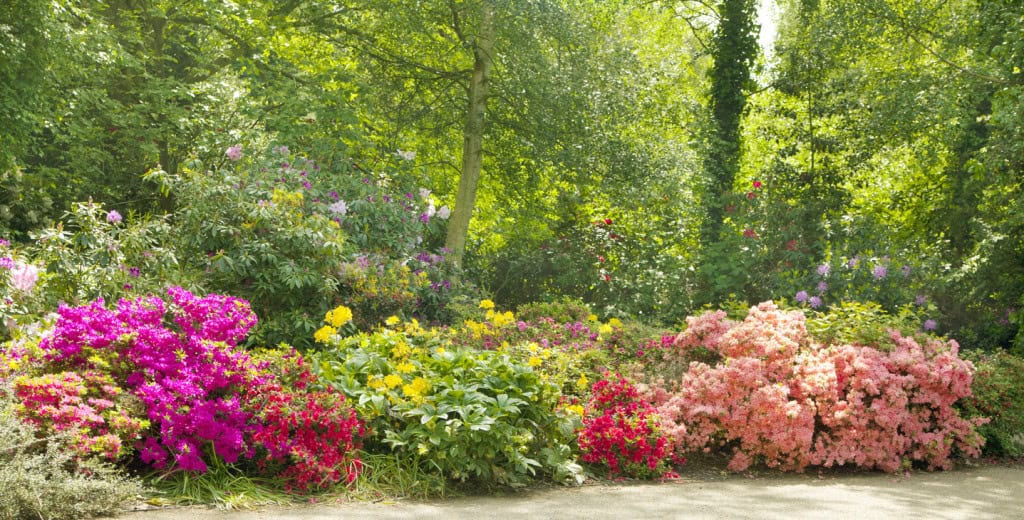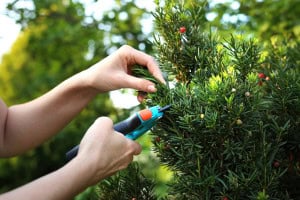Get a Jump on Spring With These 7 Plant and Tree Care Tips
March 20, 2017
Get a Jump on Spring With These 7 Plant and Tree Care Tips
Sure, it felt like spring a few weeks back. However, this week has abruptly returned us to the realities of winter. As I scrape that last bit of snow off the driveway, I am not fooled. I know that spring is truly just around the corner and that soon I will be spending my time outside doing a little preventative landscape maintenance.
Now is the best time to develop a winning strategy for your landscape
Your landscaping is a big investment and applying the proper maintenance techniques at the proper time of year makes for a terrific way to protect that investment. Now that winter has had its last hoorah, it’s time to get a jump on spring by implementing some of our suggested early-spring plant and tree care.
Here Are DiSabatino Landscaping’s 7 Early Spring Plant & Tree Care Maintenance Tips:
1. Fertilizations: As your perennial flowers and woody plants come out of dormancy, an early spring fertilization will help them successfully gear up for the growing cycle ahead and encourage exceptional growth throughout the season.
2. Emerald Ash Borer [EAB] Applications: We announced last fall EAB had been confirmed in Delaware and is a danger to Ash Trees. Spring is the best time to have your trees carefully assessed and treated to prevent loss.
3. Prunicola Scale on Holly and Cherry Laurel: Prunicola Scale are insects that feed on landscape trees and shrubs. As these pests feed on a plant’s most vital nutrients, if left untreated, they will stunt the plant’s growth and will eventually cause a dieback of twigs and foliar yellowing. Timing is everything, as the first generation presents in May to June, second generation in July to mid-August and third generation in September.
4. Dogwood Anthracnose: This disease of the flowering and Pacific dogwood has been reported nationwide and is mostly favored by cool, wet spring and fall temperatures. However, disease can happen throughout the growing season. Symptoms are tan spots, blotches and shot holes on leaves which can progress down to shoots, resulting in tiny cankers. Treating early spring is a great preventative measure.
5. Pear Leaf Blight and Fruit Spot: Fungus Fabraea maculate, which infects leaves, fruit and shoots of pear and quince trees and the leaves of apple trees can build up rapidly and can cause defoliation within weeks, if not controlled. Leaf spots first appear as small purplish dots on the leaves located on lower branches of the photinia and pear tree. Routine fungicide sprays are a suggested method of control.
 6. Early Spring Pruning for Evergreens: Most evergreens require little pruning except when a desire to control plant height, density or maintain a special shape. Prune all evergreens, with the exception of pines, before new growth starts in the spring or during semi-dormant periods in mid-summer. To maintain natural shape, follow the general branching pattern and remove dead, diseased or broken branches as needed.
6. Early Spring Pruning for Evergreens: Most evergreens require little pruning except when a desire to control plant height, density or maintain a special shape. Prune all evergreens, with the exception of pines, before new growth starts in the spring or during semi-dormant periods in mid-summer. To maintain natural shape, follow the general branching pattern and remove dead, diseased or broken branches as needed.
7. Structural Pruning for Evergreen Shrubs & Trees: Shearing creates a more formal geometric shape which can be hard to maintain as the plant grows. For a more structural look, shear in late spring or early summer when new growth begins. This will allow for healing and new buds to form the following year.
 DiSabatino Landscaping is Delaware’s #1 Tree and Shrub Care Specialist. We employee the latest arboricultural techniques for trimming, pruning and fertilizing trees. Our ISA certified arborist can help identify your risk by readily identifying tree and shrub diseases, infestations or fungus that can be harmful and costly to your landscaping. Give us a call today! 302-764-0480
DiSabatino Landscaping is Delaware’s #1 Tree and Shrub Care Specialist. We employee the latest arboricultural techniques for trimming, pruning and fertilizing trees. Our ISA certified arborist can help identify your risk by readily identifying tree and shrub diseases, infestations or fungus that can be harmful and costly to your landscaping. Give us a call today! 302-764-0480